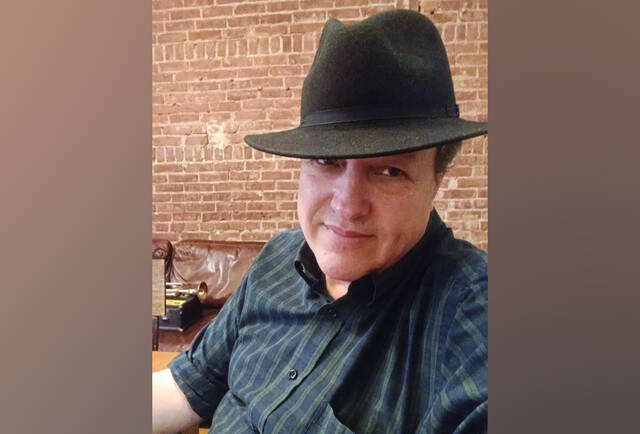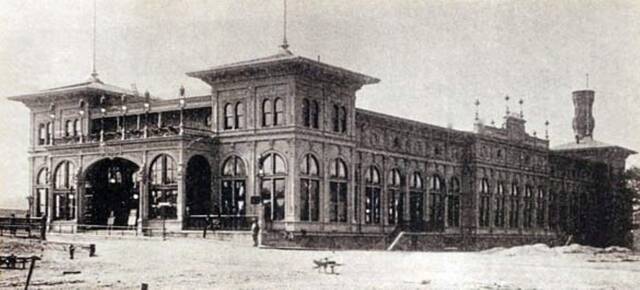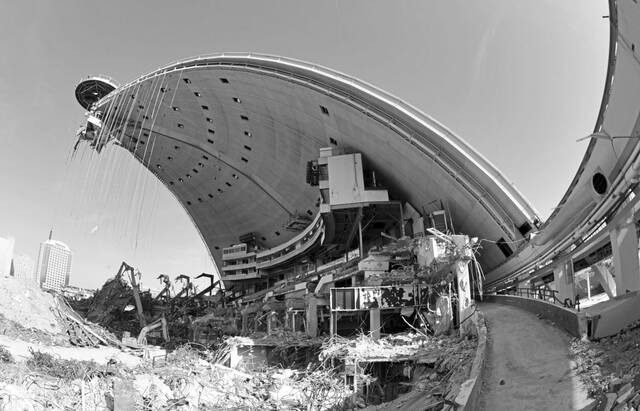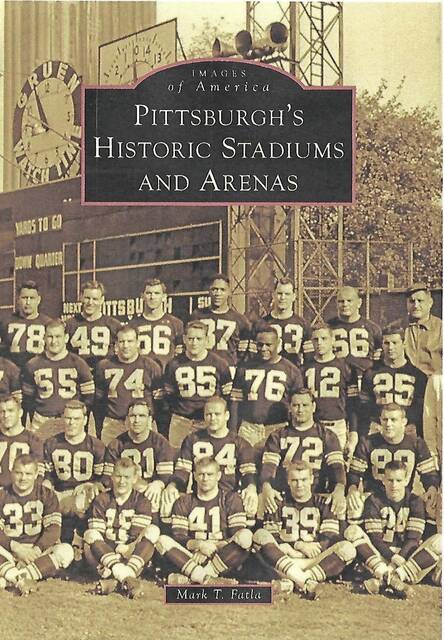North Side author highlights Pittsburgh's history of stadiums and arenas
Pittsburgh had the first indoor rink in North America with artificial ice.
The Schenley Park Casino was located at the entrance to Schenley Park when it opened in 1895.
Built at a cost of $400,000, it had 18-foot windows, 1,500 incandescent lights, two tiers of seating, luxury boxes, a café, a merry-go-round and a rooftop garden. To create ice, a series of chiller pipes were laid down and covered with concrete to create a watertight bowl. Ammonia gas was pumped through the pipes, freezing the concrete and an inch of water on top.
“In some ways, Pittsburgh was ahead of its time,” said Mark T. Fatla, author of “Pittsburgh’s Historic Stadiums and Arenas,” a book highlighting gems like the Schenley Park Casino. “Pittsburgh had this can-do attitude and had the engineers and the materials and the supplies to work with and it was fascinating to uncover this during my research.”
“Pittsburgh’s Historic Stadiums and Arenas” chronicles the city’s professional hockey, baseball, football and basketball venues and teams. Photographs capture the design and construction phases, major changes as facilities expanded and aged and eventually, the demolition of some venues. Fatla said that the players, teams and moments are not the focus.
“There are many other books to tell their stories,” Fatla said. “Instead, the stadiums and arenas take center stage.”
The first hockey game was played at the Schenley Casino on Dec. 30, 1895. Eighteen months later, it was destroyed by a fire. But that was just the start of hockey in the city. A car barn at the corner of Fifth Avenue and Craig Street in Oakland was renovated into a multi-use entertainment venue, including an ice rink, called the Duquesne Garden.
The site of the first NHL games in Pittsburgh, it was demolished in 1956.
The development of a replacement venue would take a long and torturous path, Fatla wrote.
That path led to the Civic Arena in Uptown, which later became Mellon Arena. It had a retractable roof and was dedicated on Sept. 17, 1961. The dome consisted of eight panels, six of which were movable.
“The opening of the roof was pretty spectacular,” Fatla said. “It was a fascinating building and there are images that show the structure from plan to demolition, the whole sequence. The Civic Arena was a modern engineering marvel. It was the largest movable dome in the world.”
Mellon Arena closed in 2010 when Consol Energy Center, which is currently PPG Paints Arena, opened nearby.
This is Fatla’s second book for Arcadia Publishing. He also penned “Pittsburgh’s Historic Ballparks,” which highlights the tradition of the home opener of baseball in the city.
A Mt. Pleasant native, Fatla lives in the North Side not far from PNC Park and Acrisure Stadium.
“What was more challenging for this book than the last one was I know less about football, hockey and basketball versus baseball,” said Fatla. “It’s been a fun journey. My hope is that this book will advance the knowledge of these facilities and be a learning process for the architectural history of the area. Researching for this book was like going on a giant scavenger hunt to find photos by visiting museums and architectural archives.”
Pittsburgh’s rich history of major-league baseball ballparks dates back to the 1870s. The earliest wooden grandstand was erected at Union Park in Allegheny, now Pittsburgh’s North Side. It was renamed Recreation Park. Exposition Park was home to the Pittsburgh Pirates until 1909 when Forbes Field in Oakland hosted its first baseball game that July.
The Steelers also played at Forbes Field. Both played at Three Rivers Stadium on the North Shore until they each got their own parks in 2001 with the opening of PNC Park and Heinz Field, now Acrisure Stadium.
Pittsburgh’s professional basketball history dates back to the 1898-99 amateur league with the Allegheny County Basketball League forming in 1903 followed by the Central Basketball League in 1906, which folded in 1912 because of the rising cost of players’ salaries. The previously mentioned Duquesne Garden installed a court to host some basketball games, as did the South Side Market House.
A team called the Second Story Morrys won the Central Professional Basketball League title. Other teams included the Pittsburgh Renaissance, Pittsburgh Pipers, which re-branded as the Condors, Piranhas, Pit Bulls, Xplosion, Phantoms and Steel City Yellow Jackets of the American Basketball Association, which survived the longest and won a championship in 2022 at Penn State McKeesport, now Penn State Greater Allegheny.
The chapter on the early hockey arenas and the vintage advertisements was Arcadia senior publicist Maddison Potter’s favorite chapter, Potter said via email.
“It’s clear that Mark is passionate about local history and sports,” Potter said. “After ‘Pittsburgh’s Historic Ballparks,’ this was a natural next step.”
The book is $24.99 and available at City Books and Johnny Angel’s Ginchy Stuff on the North Side, major bookstores and Amazon. Fatla will be doing free talks at various libraries throughout Allegheny County. Check Fatla’s Facebook page for more details.
JoAnne Klimovich Harrop is a TribLive reporter covering the region's diverse culinary scene and unique homes. She writes features about interesting people. The Edward R. Murrow award-winning journalist began her career as a sports reporter. She has been with the Trib for 26 years and is the author of "A Daughter's Promise." She can be reached at jharrop@triblive.com.
Remove the ads from your TribLIVE reading experience but still support the journalists who create the content with TribLIVE Ad-Free.





